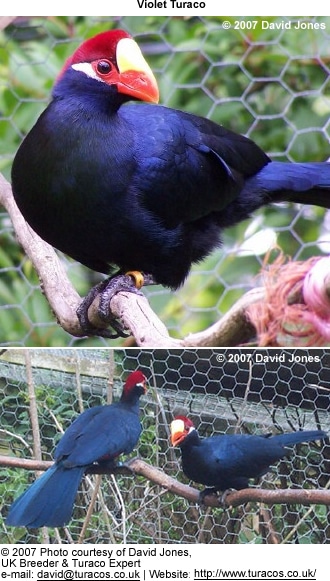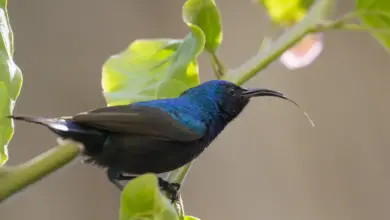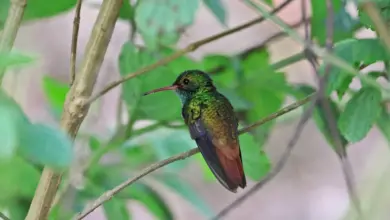Yucatan Jays (Cyanocorax yucatanicus)
The Yucatán Jays (Cyanocorax yucatanicus) are endemic to southern Mexico and northern Central America, where they have an extensive range and a large, increasing population.
Distribution / Habitat
Yucatan Jays occur naturally in Southern Mexico, Belize and Guatemala. Within their range, they are resident (nonmigratory).
These birds mostly inhabit tropical deciduous forests and heavily degraded former forest, scrub forest and to a lesser extent in coastal scrub.
In Belize, where they are less common, they are found in dense pine ridges and the swampy regions bordering them.
These social birds usually occur in flocks.
Subspecies, Ranges and ID:
- Cyanocorax yucatanicus yucatanicus ( A. J. C. Dubois, 1875) – Nominate Race
- Found in southeastern Mexico on the Yucatán Peninsula, the state of Campeche except southwestern parts, and the state of Quintana Roo) south to northern Guatemala, where they specifically occur in the Petén district) and in Northern Belize.
- The greyish overtones of the blue mantle vary between the two races.
- Cyanocorax yucatanicus rivularis (Brodkorb, 1940)
- This southwestern subspecies occurs naturally in the rainforests of the states of Tabasco and southwestern Campeche in southeastern Mexico.
- ID: Larger in size and with a somewhat brighter blue plumage than the nominate form.
Description
Size
Yucatan Jays weigh on average 12.62 inches (32.05 cm) with females being slightly larger.
Plumage Details / Adults
The head, neck, chest and abdomen are black. The wings, mantle and tail are blue.
The undertail coverts (feathers) are a dusky blue. The back is either bright deep azure / sky blue or deep turquoise blue. The tail is a deeper blue, nearly cobalt, and the flight feathers have a greenish tint.
Other Physical Details
They have black bills and yellow legs. The eyes (irises) are dark black-brown in adults as well as juveniles.
Gender ID
Males and females look identical.
Juvenile Description
First-year juveniles can be identified by their white heads and bodies. Their wings and tail are greyish-blue with white-tipped tail feathers (except for the middle pair). The bill and feet are pale yellow with pink flesh tones. The inside of the mouth is white. In the second year, they molt into the black head and body plumage of the adult. Their bare parts are yellow.
Second-year juveniles look similar to adults, except for the yellow bill and yellow eye rings, which turn black when they are about four years old. They also retain the white-tipped tail feathers until they molt into the final adult plumage.
Similar Species
Jucatan Jays resemble the San Blas Jays (Cyanocorax sanblasianus) and the Purplish-backed Jays (Cyanocorax beecheii); however, confusion is unlikely as they don’t share a natural range. The latter can be differentiated by their yellow eyes (irises).
Diet / Feeding
Yucatan Jays feed in loose flocks either high in the canopy or near the ground. They adapt their diets to take advantage of seasonally available plant and animal material.
Their diet consists of seeds, fruits and animal matter (such as spiders, caterpillars, spiders, ants, slugs and larvae). They have been observed following army ants and capturing invertebrates flushed by the ants. They will also scavenge tables.
Breeding / Nesting
Yucatan Jays breed in cooperative groups consisting of less than 10 birds. Such a group usually includes one breeding pair and younger birds (1 and 2-year olds) that assist the breeding pair in raising the young.
Their platform nests are constructed loosely out of sticks and coarse plant fiber with shallow cup-shape indentations in the middle to hold the eggs and the young. These nests are often so flimsy that the eggs and the young can be seen from below.
These nests are usually situated etween 14 – 30 feet (4.3 and 9.1 m) above the ground.
A full clutch consists of 4 – 6 eggs.These eggs are mottled pale to medium pinkish-buff with reddish-buff speckles.
The young and eggs are preyed on by tree squirrels and snakes. Adults will defend their nests and their young by making alarm calls in response to threats and attempting to ward off attackers through pecking and striking.
Calls / Vocalizations / Sounds
Yucatan Jays have various vocalizations. One is a simple harsh clatter or rattle; another is a sharp “pip” followed by a series of high-pitched clear notes resembling those of a titmouse. Davis described it in 1957 as “Chea-chea-chea-chea-chea” which is sometimes preceded by a loud nasal “eyah“.
http://www.xeno-canto.org/embed.php?XC=5496&simple=0
Alternate (Global) NaThe Yucatán Jays (Cyanocorax yucatanicus) are endemic to southern Mexico and northern Central America, where they have an extensive range and a large, increasing population.mes
Chinese: ???? … Czech: Sojka yukatánská … Danish: Yucatánblåskade … Dutch: Yucatangaai … Estonian: Yucatani tõmmunäär … Finnish: Jukataninharakka … French: Geai du Yucatan … German: Yucatan Blauhäher, Yucatanblaurabe … Italian: Ghiandaia dello Yucatan … Japanese: Yukatannurebakakesu … Mayan languages: ch`el … Norwegian: Yucatánskrike … Polish: modrowronka jukatanska … Russian: ?????????? ????? … Slovak: kapuciarka žltonohá … Spanish: Chara Yucateca, Urraca de Yucatán, Urraca Yucateca … Swedish: Yucatanskrika
Jay Information … Photos of Different Jay Species for Identification







